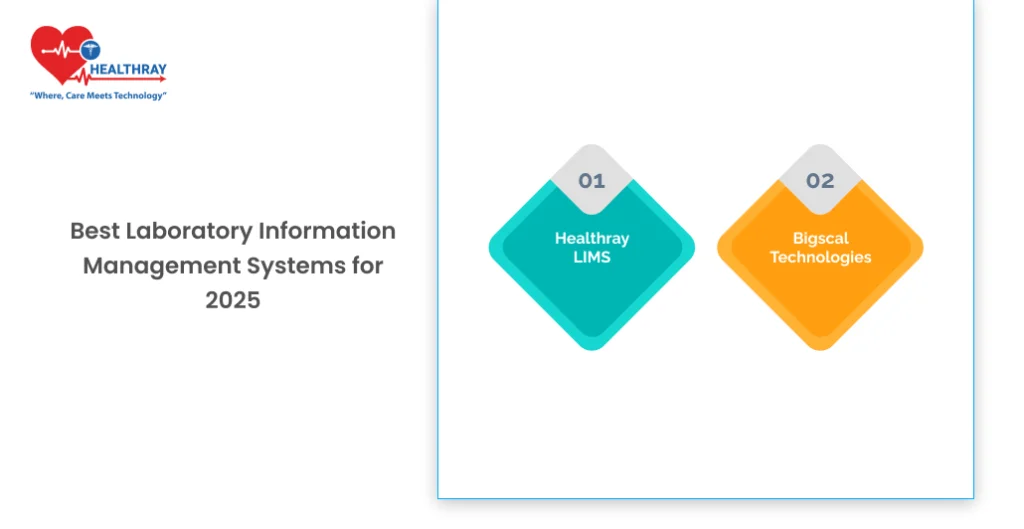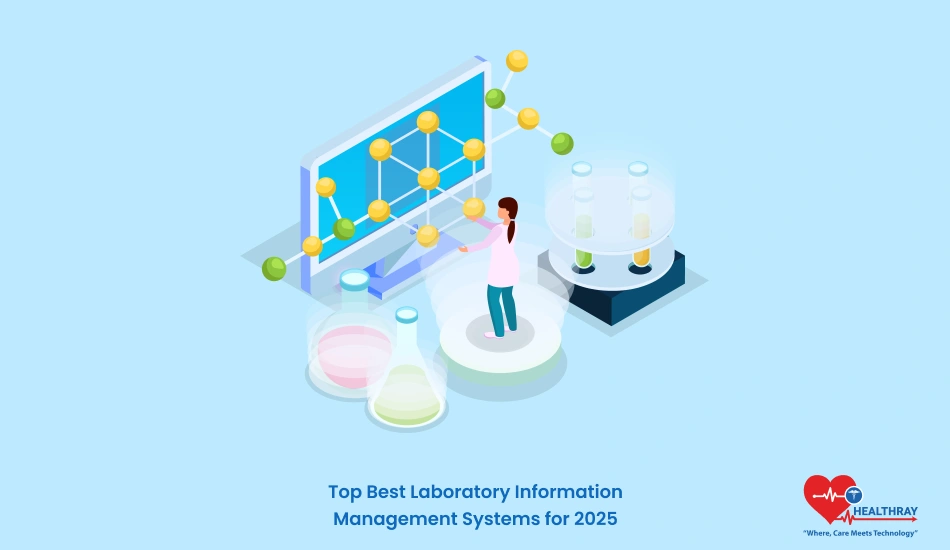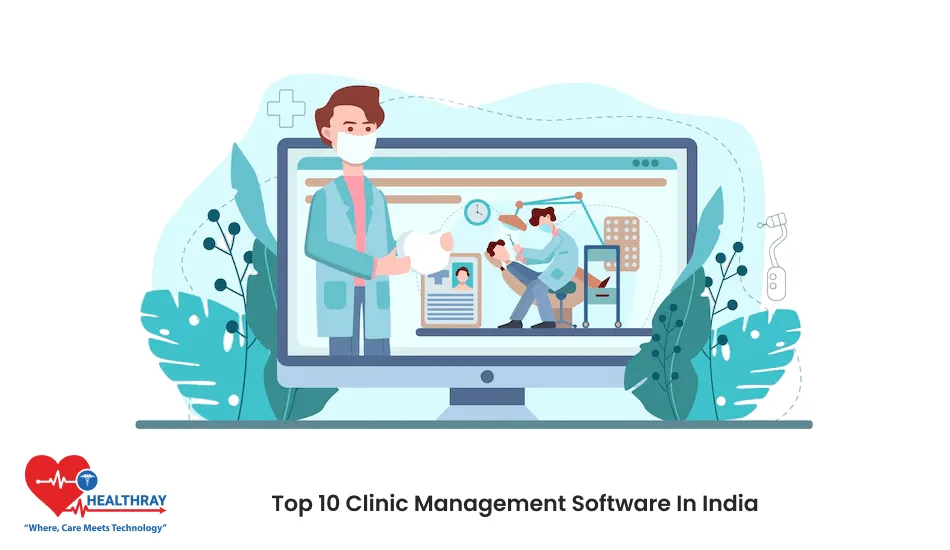Introduction
Labs run full-throttle today. Labs process the highest quantities of data from simple to complex reporting. It really becomes essential to the efficient management of lab activities as it has on the agenda for both lab managers and healthcare executives. But choosing a LIMS out of many, can you think which one to do to make your lab proud of itself?
It is more than a data warehouse. It is that central command hub keeping your lab organized, productive, and in compliance. By the time you get to 2025, it will be the Laboratory Information Management System that makes all the difference between the high-performance streamlined lab and the one bogged down by inefficiencies and lost data.
We break down the top LIMS solutions for 2025. There is critical feature information and prices, pros and cons of each system to help ensure that any decision made on which system will serve the lab the best is based on a well-informed choice. Included are the latest trends within the LIMS market, whether it’s the integration of AI or through cloud-based options that are changing the way the lab operates. To be able to work professionally within a lab setup dealing with data in 2025, read ahead.
What to Look for in a LIMS?

Selecting the right LIMS will enable you to identify one that is appropriate for your unique lab needs and workflow. Not all LIMSs are equal, and most attention should be given to features that benefit the laboratory most. The key core features of any LIMS are provided along with why each is crucial to any laboratory.
Data Management and Accessibility
What It Is: A LIMS is basically a data warehouse that helps labs manage, organize, and retrieve data in an easy and standardized manner. That includes everything from tracking samples to experiment data and quality control information.
Why It Matters: Laboratories are huge data houses, and getting the information completed in good time and accurately becomes a need. A well-written LIMS system will enable the user to find what he or she wants at the point of need without much ado. Such efficiency can save hours that are numberless and avoid hours of correcting the entry data.
Compliance and Security
What it is: Compliance features in a LIMS ensure that the system is designed within the rules of an industry, be it HIPAA with regard to information regarding a patient or GLP with regard to activities of laboratory.
Why it matters:
This will strictly control the lab compliance rate in the pharmaceutical and healthcare industry. Based on your choice of a good LIMS that gives full compliance and data security, the risk will be minimal and thus your lab is ready for audit. Its features include an audit trail, role-based access, and encryption.
Integration capabilities
What It Is: LIMS needs to be highly integrated with all other software and equipment, such as lab instruments, electronic health records (EHR), and ERP systems.
Why It Matters: The lab data remains siloed without integrated management, slowing many processes and even increasing manual work. LIMS that can draw data from other systems or interact with instruments enables labs to automate data collection hence improving workflow efficiency. With best laboratory information management system, saves time and reduces the chances of error in data transfer.
Scalability and Customization
What It Is: Scalability enables LIMS to grow with your laboratory growth. Customization makes sure that LIMS fit exactly as your individual requirements dictate.
Why It Matters: No two labs are ever the same. Only a flexible LIMS lets you know that application can adapt to the change within your lab. It grows with your lab, as you add more samples, data, and users. You make features customizable, so you are in a position to tailor your LIMS to suit your workflows, reports, and handling of data as you prefer. This is an investment for the long haul.
User-friendly interfaces
That defines how easily one can use this LIMS goes as far as from entering information to retrieving a report by the interface of the laboratory.
Why Does it Matter: This would imply an easier learning curve and hence more adoption by the users. In general, most of the lab staff members will vary from relatively very techno-savvy to quite non-techie, and hence if the LIMS interface appears simple enough to work in, most can work on it efficiently and thus very few errors happen. Higher productivity and fewer errors guarantee optimal performance in such applications.
Cost and ROI (Return on Investment)
What It Is: Cost includes one-time and recurring operational costs, as well as upgrade or training costs. As far as ROI is concerned, it includes the value that the LIMS would bring over time.
Why It Matters: Such an investment in a LIMS is a capital-intensive undertaking and therefore calls for tremendous recognition of the total cost of ownership. And, it is not about the cost; rather, it has aspects of streamlined operations, the elimination of human errors, and saving time so that it can enhance return on investment. Compare pricing structures and figure out what works best for your lab.
All these are important in guiding you on the right choice you make for your lab. Guiding your use of these fundamental elements in the search will ensure that a LIMS helps to make your lab efficient, keep you on track, and assists in attaining your 2025 goals and beyond.
Best Laboratory Information Management Systems for 2025

Here is a highly curated list of the best LIMS for 2025. Each is great at something and with the different needs of a lab whether it be managing data, integration, or scalability, the following is here to make it easy for you to compare LIMS systems, including overview, key features pros, and cons, and general pricing information where available.
Healthray LIMS
- Overview: Healthray is the market’s leading LIMS provider offering a full range of comprehensive and customizable solutions for any kind of laboratory environment.
- Key Features: Advanced data tracking, regulatory compliance tools, wide-ranging integration options, flexible deployment models – cloud and on-premises
- Pros: Very customizable, robust user community, rich support resources.
- Cons: More learning curve for new users, but we give the best training and support.
- Pricing: Custom quotes based on size of lab and needs.
Bigscal Technologies
- Overview: Bigscal Technologies SampleManager is the most used for labs operating in regulated industries with a primary emphasis on compliance and data security.
- Key Features: Robust compliance tools, integration with instruments, user-friendly design, access on mobile devices.
- Pros: Compliant reliable, solid support to laboratory workflows, scalable.
- Cons: High-priced, highly complex configuration might be needed.
- Pricing: Quote available on request, and also subscription and licensing options are available.
Conclusion
Actually, the good LIMS will either break or build on efficiency and overall operations in a laboratory. Looking at the reviews above, every one of these has differentiated strengths marked to specifically meet needs that have been achieved in the laboratories-from robust data compliance and security, ease of integration, scalability as seen above. These are the details coupled with how they may apply to the specific workflows of a laboratory, and lab managers and health care executives must consider them as they make their choice. The other factor lies in the power of a good integrated LIMS in giving your Hospital Management System an avenue through which to increase total healthcare delivery and operational efficiencies.





